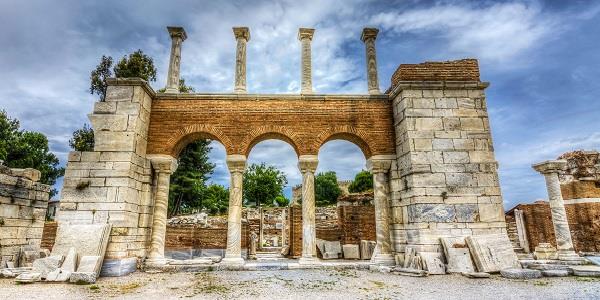
There are holiday destinations around the world that offer predominantly one thing, or perhaps two. Sun, sea and sand, for example. Or outstanding natural beauty. Or a wealth of history. Or interesting excursions to go on. Or walks to enjoy.
But there are also holiday locations that offer all of those pleasures, and more. And Physkos in Turkey is one.
Physkos is near Turunç: originally a small fishing village, these days given over more to tourism, but now as then lapped by the limpid waters of the Aegean Sea.
In summer, Turkey gets seriously hot – so if a sun-sea-and-sand holiday is what you and your family are after, look no further.

But at other times of the year, there are other delights to entice you. You can explore the Carian Trail, a new (or newish) footpath through Turkey’s south-west; though at 820kms in length, you may not want to do all of it! You could take to the water to explore the hidden coves along the Bay of Marmaris, and get up close and personal with the area’s abundant bird and marine life. You could simply revel in the outstanding natural beauty of the place. Or you can indulge in a love of things historic; there are few places on earth that boast such a wealth of history and ancient sites as Turkey, and there are a number near Turunç – the Dalyan Rock Tombs, for instance, or Cleopatra Island – which are well worth visiting.
But the granddaddy of them all has to be Ephesus. It is a trek – 230-odd kms, a three-hour journey there and back – but it is absolutely worth it.

Possibly Ephesus’s most famous (though nowadays, paradoxically, least impressive) attraction is the Temple of Artemis (pictured at top), which was one of the Seven Wonders of the Ancient World. What remains, nowadays? Just a pillar.
But for me what sets the place apart is its longevity. Ephesus was built – or the building work was started – by the Ancient Greeks in the 10th Century BC, but it wasn’t finally abandoned until the 1400s, a full 2,500 years later. During that long period the city enjoyed (or endured) wave after wave of occupation and reoccupation as it fell into the hands of different nations and warring ethnic groups, all well aware of Ephesus’s trading importance as a major port city on the Aegean. After the Greeks came the Egyptians (briefly), then the Romans, then the Christians (the city was the site of one of the Seven Churches of Asia mentioned in the Book of Revelations, and St John’s Gospel may have been written there), then the Goths, and then finally the Ottomans.
By the time the Turks showed up the city’s strategic importance had drastically diminished, as the harbour was repeatedly silted-up by the river (today called the Küçük Menderes). The place was finally abandoned some 500 years ago.
But what remains is an historical legacy embodied in jaw-dropping architecture.
The facade of the Library of Celsus

The 25,000-seater amphitheatre

The Temple of Hadrian

The Basilica of St John
The Temple of Artemis is largely no more; but there’s enough ruined glory still standing to give a clear impression of just what a pinnacle of civilisation Ephesus was. Among the wonders to behold are the Library of Celsus, built around 125AD; the 25,000-seater open-air theatre, thought to be the biggest in the ancient world; the Temple of Hadrian; and the Basilica of St John, believed to be the site of the Apostle’s final resting place. And there is much, much more; an awful lot of history, packed into a relatively small space.
More, possibly, than you can do justice to in a day. But just as there is plenty more to see at Ephesus, there is plenty more to enjoy at Physkos, Turunç, and in the surrounding area.
You’ll just have to come again!


